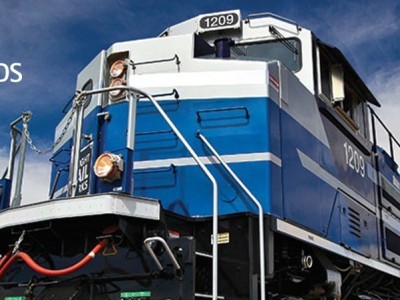FTR’s April Trucking Conditions Index lowest ever ahead of expected improvement
Jun 11, 2020FTR’s Trucking Conditions Index reading for April was the lowest ever at -28.66, reflecting the contraction due to the COVID-19 pandemic. The previous low was -16.08 in September 2008. The only significant positive factor for the TCI was the cost of fuel; demand, utilization, and rates were extremely negative.
April represented the bottom for most freight-related economic indicators – a conclusion confirmed by an uptick in payroll employment in May – but the pace of recovery remains uncertain. We expect post-April trucking conditions to improve sharply while remaining in negative territory through early 2021. However, we are prepared for significant revisions in the outlook as we see more data on demand, capacity, and utilization.
Details of the April TCI are found in the June issue of FTR’s Trucking Update, published May 28. Additional commentary provides updates on the COVID-19 discussion and the uncertainties likely to impact the recovery, especially in terms of capacity. Along with the TCI and COVID-19 analysis, the Trucking Update includes data and analysis on load volumes, the capacity environment, rates, costs, and the truck driver situation.
Avery Vise, vice president of trucking, commented, “Spot market load volumes have recovered well since bottoming out in mid-April, although the recovery seems to have stalled out a bit. The unprecedented depth and speed of the contraction and the severity of disruption in supply chains and freight networks will make it difficult to assess in the short run whether higher volumes are merely temporary or part of a sustained rebound. The critical question is what happens once consumers and businesses exhaust the trillions of dollars that Washington has pumped into the economy to offset the pandemic’s financial consequences. All that we can be sure about is that market conditions will not be as bad as they were in April.”
The TCI tracks the changes representing five major conditions in the U.S. truck market. These conditions are: freight volumes, freight rates, fleet capacity, fuel price, and financing. The individual metrics are combined into a single index indicating the industry’s overall health. A positive score represents good, optimistic conditions. Conversely, a negative score represents bad, pessimistic conditions. Readings near zero are consistent with a neutral operating environment, and double-digit readings (up or down) suggest significant operating changes are likely.
Similar Stories

AAR applauds Patrick Fuchs STB Chairman designation
View Article
AAR Statement on the Inauguration of Donald J. Trump
View ArticleBlueGrace Logistics Announces 2024 LTL Carrier Award Winners: Southeastern Freight Lines and Old Dominion Freight Line
BlueGrace Logistics (BlueGrace), a leading Third-Party Logistics (3PL) provider operating within North America, is excited to announce the recipients of its 2024 LTL (Less-Than-Truckload) Carrier Awards, honoring carriers who demonstrate…
View ArticleFTR Reports U.S. trailer net orders in December at 25,334 units, the most since October 2023
Total trailer production declined 10% m/m in December to 11,827 units, a relatively typical seasonal drop. However, production was down 40% y/y – 43% below the five-year December average –…
View ArticleRPA Statement on Thomas Prendergast as CEO of the Gateway Development Commission
Regional Plan Association applauds the selection of Thomas Prendergast to be the new CEO of the Gateway Development Commission (GDC). Tom‘s experience delivering major capital projects, including the first phase…
View Article
2025 Mid-West Truck & Trailer Show: The tradition continues
View ArticleGet the most up-to-date trending news!
SubscribeIndustry updates and weekly newsletter direct to your inbox!





